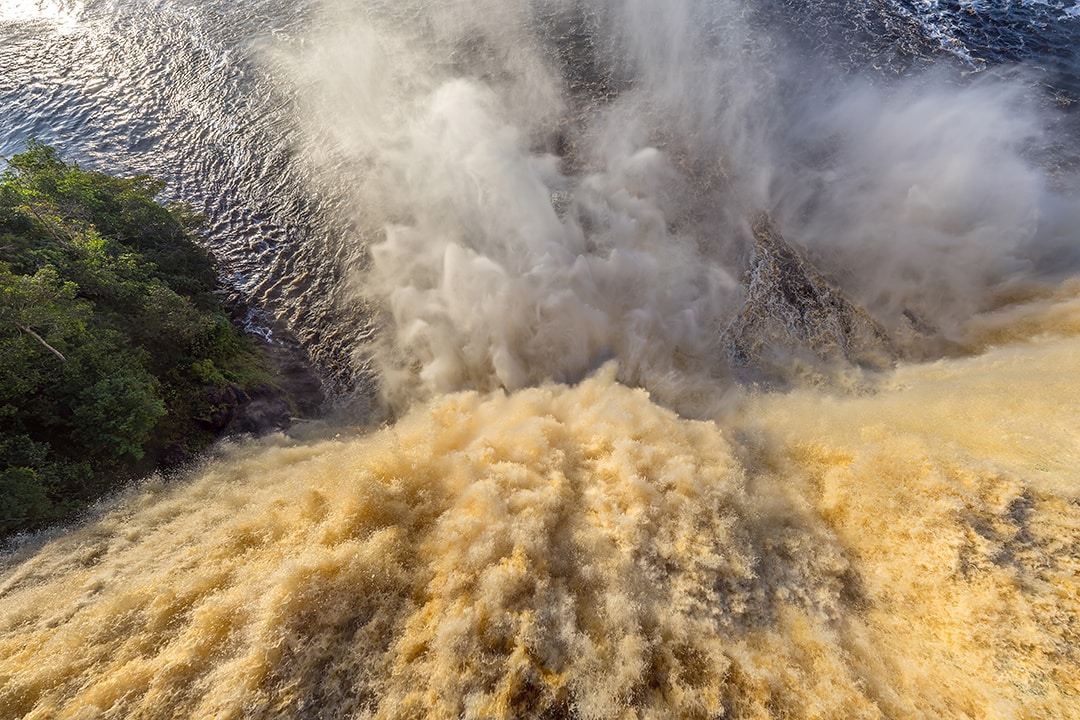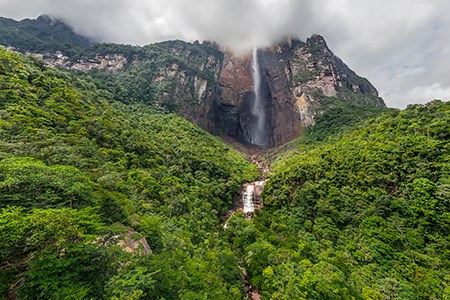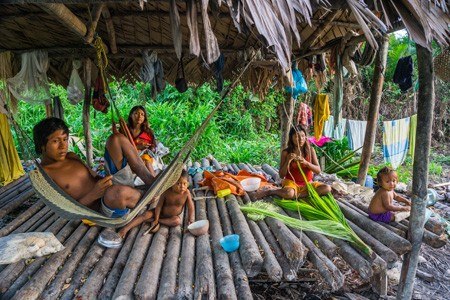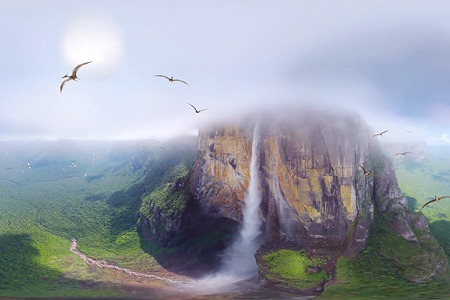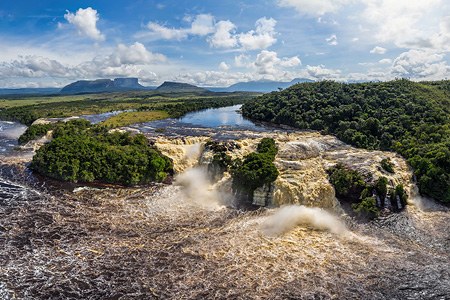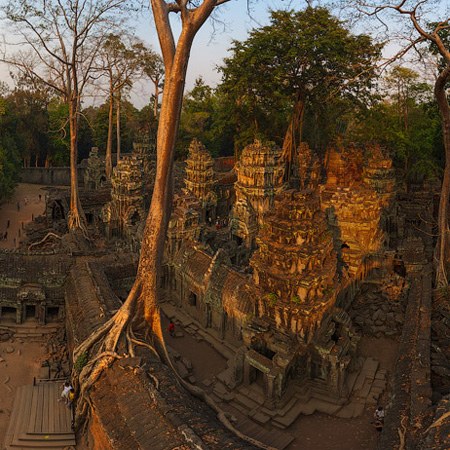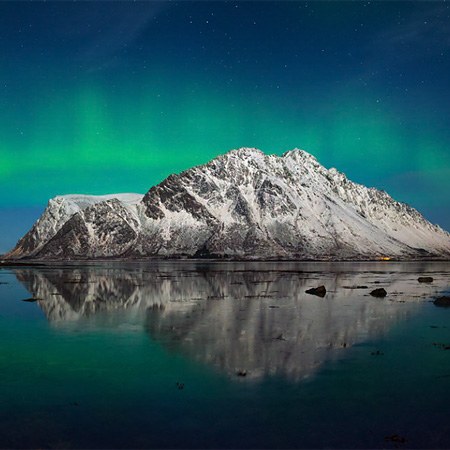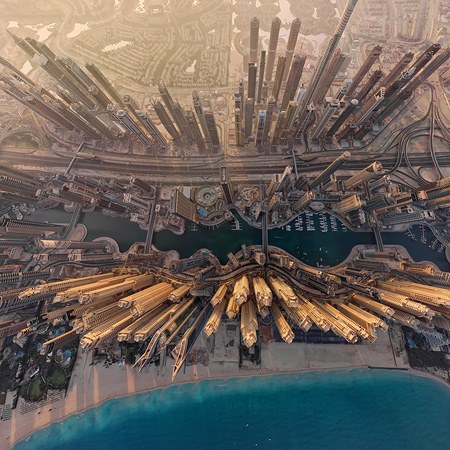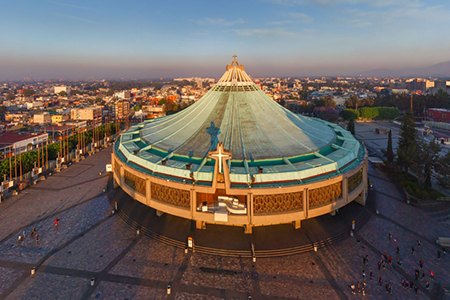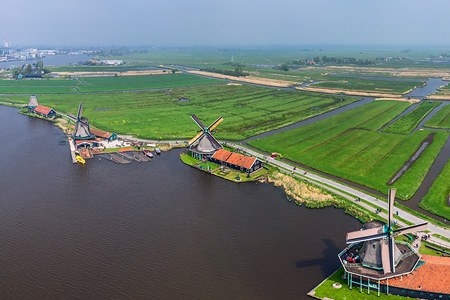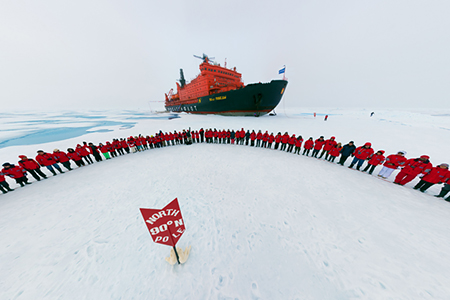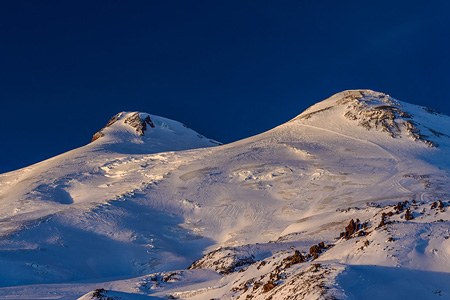Dragon and Cortina falls, Venezuela
In May of 2011 Dima Moiseenko left for Venezuela to shoot the highest waterfall in the world — the Angel Falls. The shooting took two days and was very complicated both in its technical aspect and because of the weather. Dima shot the Angel Falls itself, a few neighboring waterfalls in tepuys and spheres over the gold mines on his way back. Now we represent the first part of the shooting — a virtual tour in Venezuela over the Angel Falls' surroundings, the Dragon and Cortina Falls as well as over the gold mines.
And now the author tells:
Several years long we have been shooting the aerial panoramas of the world's most famous and extraordinary waterfalls: the Iguazú in Brazil and Argentina, the Victoria in Zambia and Zimbabwe, the Black waterfall in Iceland...
And, of course, when I had got an opportunity to buy the tickets to Venezuela, to Margarita Island (the Mecca for windsurfers and kiters), at low fare, Salto Angel (the Angel Falls) became the place where easy to get to. And the fact that it's the Highest in the World is evident!
The total height of the waterfall is 979 meters and the altitude of the endless water fall is 807 meters. The fall altitude is so high that before reaching the ground water sprays with the tiny drops and changes into a fog.
It's worth to mention that Venezuela is a unique country. In addition to Hugo Chávez and oil prices (an off-road vehicle's tank full of gasoline will cost approx. USD 3.30) there are tepuys.
Tepuys are a kind of the strange view mountains with the flat tops and famous all over the world as "table top mountains" (perhaps, because they are flat like a table). Just imagine: in deep jungle there are 1 kilometer high rocks with the vertical walls and flat tops. That is why water accumulates there after every single rain and then falls down changing into numerous waterfalls. The Angel Falls is just one of them but with the highest altitude of water fall which is almost 1 kilometer. From the same Auyantepui Mountain the more full-flowing rivers fall down but the altitude of their vertical fall is maximum 200-300 meters.

At the same time there is a problem: in a hot, dry season the Angel Falls changes into a thin water stream and in a rainy season vice versa — into a real waterfall. But the weather is so changeable there that watching after the Angel for a month it might be hard to view and enjoy all its beauty...
This season is dry but I was told that it had recently rained and I had a chance to see the real waterfall. I couldn't afford to waste time!
Right near the waterfall (in the Canaima National Park) there are no charter helicopters but only small light jets. For that reason since the first day of my staying on Margarita Island I had been trying to find any. The Angel Falls is located in the wild nature of Venezuela and it is reachable only by air or river. On the third day of my staying I found the telephone number of a company which deals with the gold mines and has a Bell-206 helicopter in its fleet. It is situated 100 miles from the waterfall. And for dear Russian friends it's absolutely possible to supply the machine for visiting the waterfall in the morning.
Well, just to get there from Margarita Island I had to change two airplanes, cross the Orinoco River and then 8 hours long drive...
On the first day we flew up at 7 a.m. and at 8:15 were standing at the Angel's foot. The helicopter landed near a camp which is a start point for the walking tours to the waterfall. Falling 1 kilometer down, water changes into spray and on the ground there is a cloud of water fog and the river appears from nowhere which then flows down...
We take off the helicopter doors there. The machine was ready to start up but the whole sky over the Auyantepui Mountain, from which the Angel flows, was covered with clouds although the waterfall itself was freely viewed.
I decided to fly up and wait there. It was hard to find a pad to land among plenty of rocks covering the table mountain top. Aside the waterfall from time to time during the hour the sky became partly blue but then again was covered with clouds.
Unexpectedly, in five minutes a cloud appeared from below and we were standing in a thick fog that moment. Several hours long the fog was so thick that a pilot refused not only to shoot but he even didn't think of flying up. We got stuck on the mountain top...
Finally, by the noon the sky seemed us blue in the valley and we flew up. We found a gap and flew down to the camp. After we had landed and had been ready to put the doors back, the waterfall, as if it was jeering at us, can be viewed again!
Though the clouds over the Auyantepui Mountain had still been existing, I decided to shoot spheres at current light. As a result, the first day photos, had been shot from every planned point, were successful although without sunlight but with parts of clouds and fog.
In the evening I stitched the panoramas' previews but I still had no feeling of the job done.
On the second day I decided to visit the Angel again. That day we started our flight from the miners' village named "88 km". It is located 1 flight hour from the waterfall.
The sky was gloomy but nobody knew what the weather was like 90 miles far from there, near the waterfall. At 8 a.m., when we arrived near the camp, the waterfall wasn't seen at all. Even the Auyantepui's wall was completely covered with the clouds which were appearing from nowhere
At 10 a.m. we were able to see a half of the waterfall, at 11 the top appeared. I thought it would be a good idea to shoot the waterfall with a cloud in the middle of it and ordered to fly up.
I left the second camera down, on the tripod with a teleobjective, in order to shoot the helicopter against a background of the Angel.
The camera was programmed to shoot the waterfall automatically with 5 seconds intervals.

The sky was grey above us. While we were flying up and coming closer to the waterfall, the top was disappeared in the fog again... But, anyway, I made the sphere... Going the second circle I felt something wrong with the camera. Indeed, the shutter was failed. We had to fly down, change the camera and ... wait again.
Suddenly, the sky began to clarify and by 12:30 almost the whole sky became blue except of the Angel and the Auyantepui Mountain's tops as if it was Murthy's Law. Then I decided to shoot at least the neighboring waterfalls. We flew around very beautiful waterfall with a scary name Dragon which is 300 meters high and then directed to the Salto Cortina with two cascades of 200 meters high each one. And from that place I saw that the cloud was leaving the Angel's top. We fast returned. In a couple of minutes the haze disappeared and I began to shoot the Angel form its top.
At 1 p.m. only the very top was lighted when the bottom was in shadow. It lasted 15 minutes. I was able to fly down 800 meters from the very top, along the stream, till the foot and shot about a dozen of spheres until the fog appeared again. Being on the ground, in the camp, while the pilot was putting the helicopter door on, I turned and saw a next cloud completely covered the waterfall... That was the way the nature favored us with a quarter of an hour for two days!
On our way back we flew over the gold mines. After some arrangements with the pilot he, finally, agreed for a small fee to fly around the mines with the helicopter door off although let me know beforehand that we could be at gun sight if somebody saw a cameraman.
Either the gold miners were tired due to the hot weather (40 grades above zero) in wet jungles or the rain accompanied with a rainbow forced them go, anyway, nobody paid us attention and we safely returned to the base.
That was the end of our complicated shooting of the Angel Falls — the highest waterfall in the world.
Written and shot by Dmitry Moiseenko
23 August 2011
Read more
Photogallery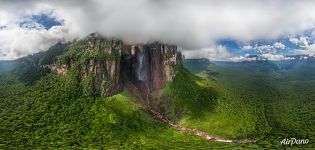 Angel Falls (31075x14053 px)
Angel Falls (31075x14053 px)
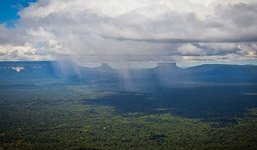 Venezuela, surroundings Angel Falls
Venezuela, surroundings Angel Falls
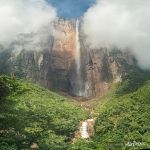 Angel Falls
Angel Falls
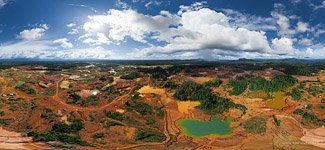 Venezuela, surroundings Angel Falls, Gold-field
Venezuela, surroundings Angel Falls, Gold-field
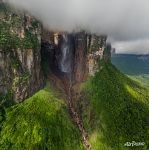 At the bottom of waterfall
At the bottom of waterfall
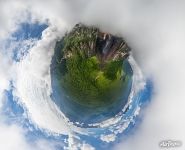 Planet of Angel Falls
Planet of Angel Falls
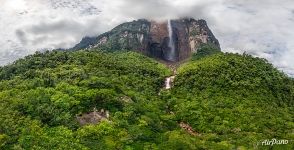 Angel Falls (22250х11320 px)
Angel Falls (22250х11320 px)
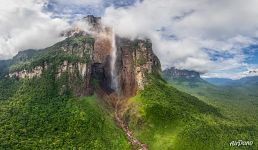 Angel Falls (21000х12200 px)
Angel Falls (21000х12200 px)
 Angel Falls
Angel Falls
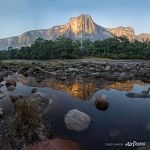 Angel Falls
Angel Falls
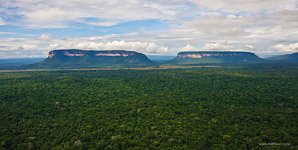 Venezuela, surroundings Angel Falls, tepui
Venezuela, surroundings Angel Falls, tepui
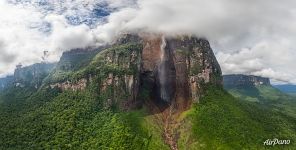 Panorama of Angel Falls (20775x10225 px)
Panorama of Angel Falls (20775x10225 px)

